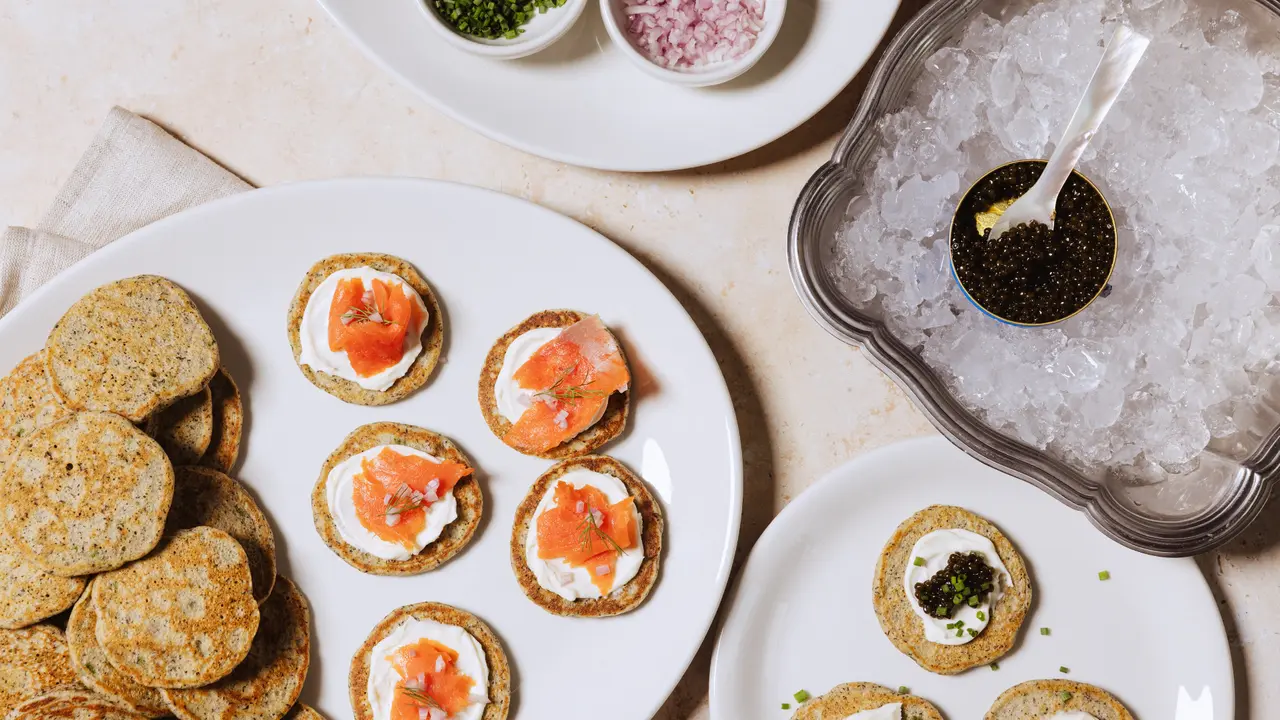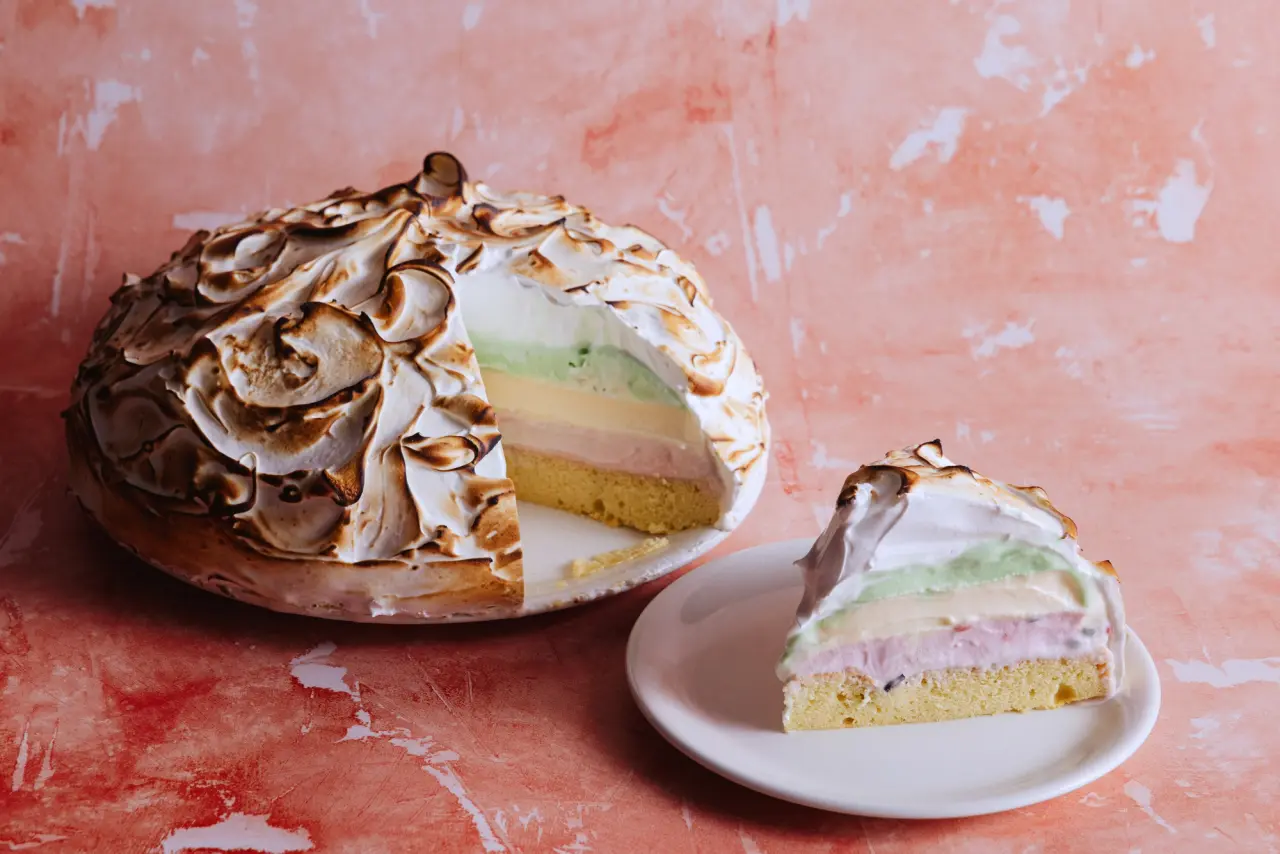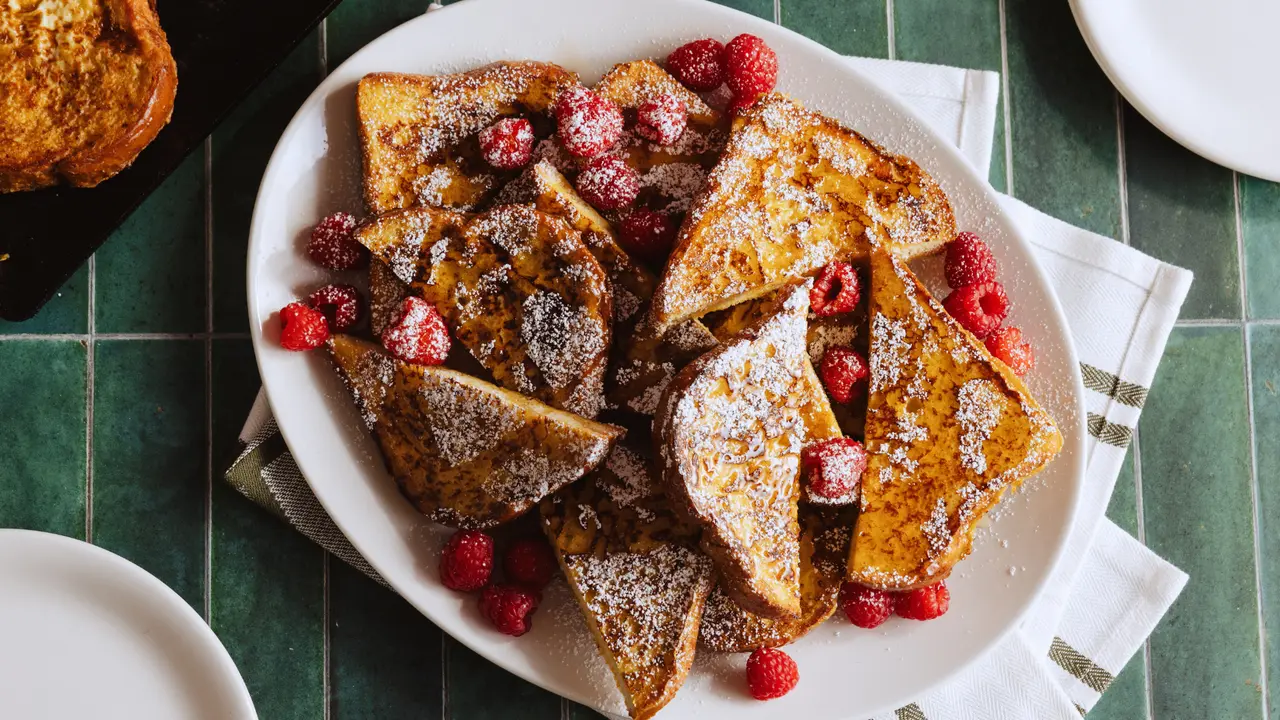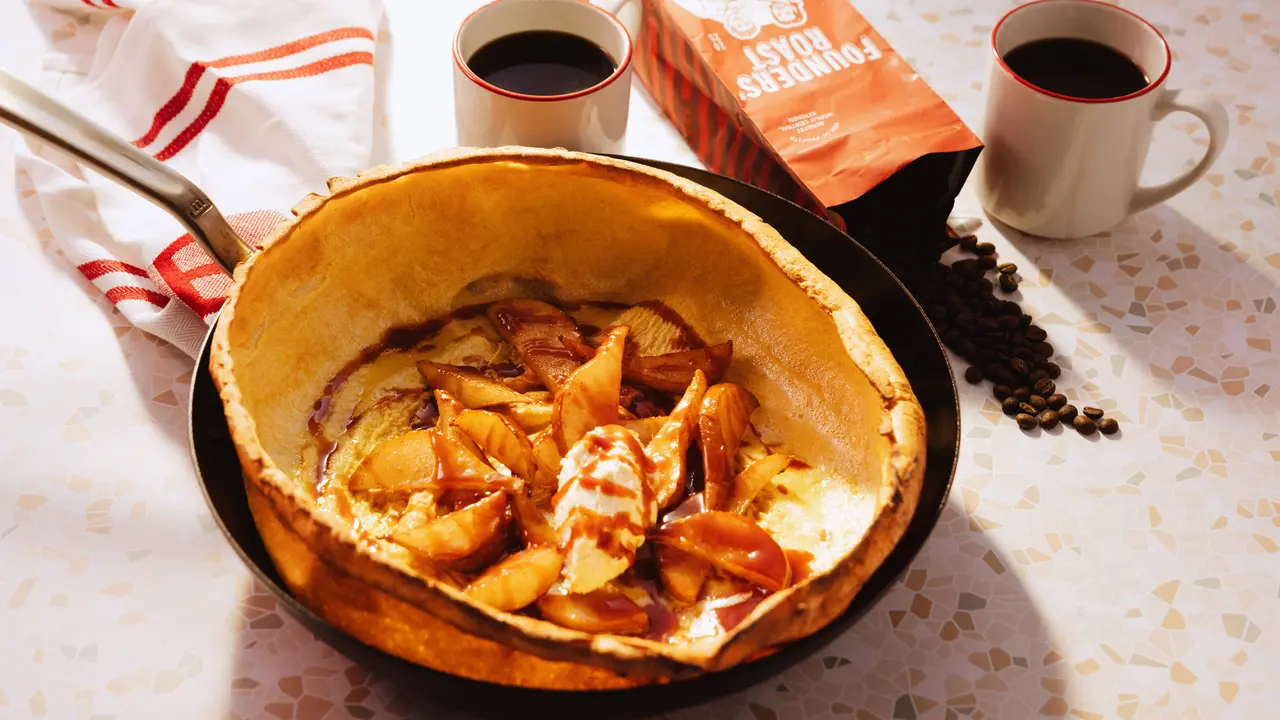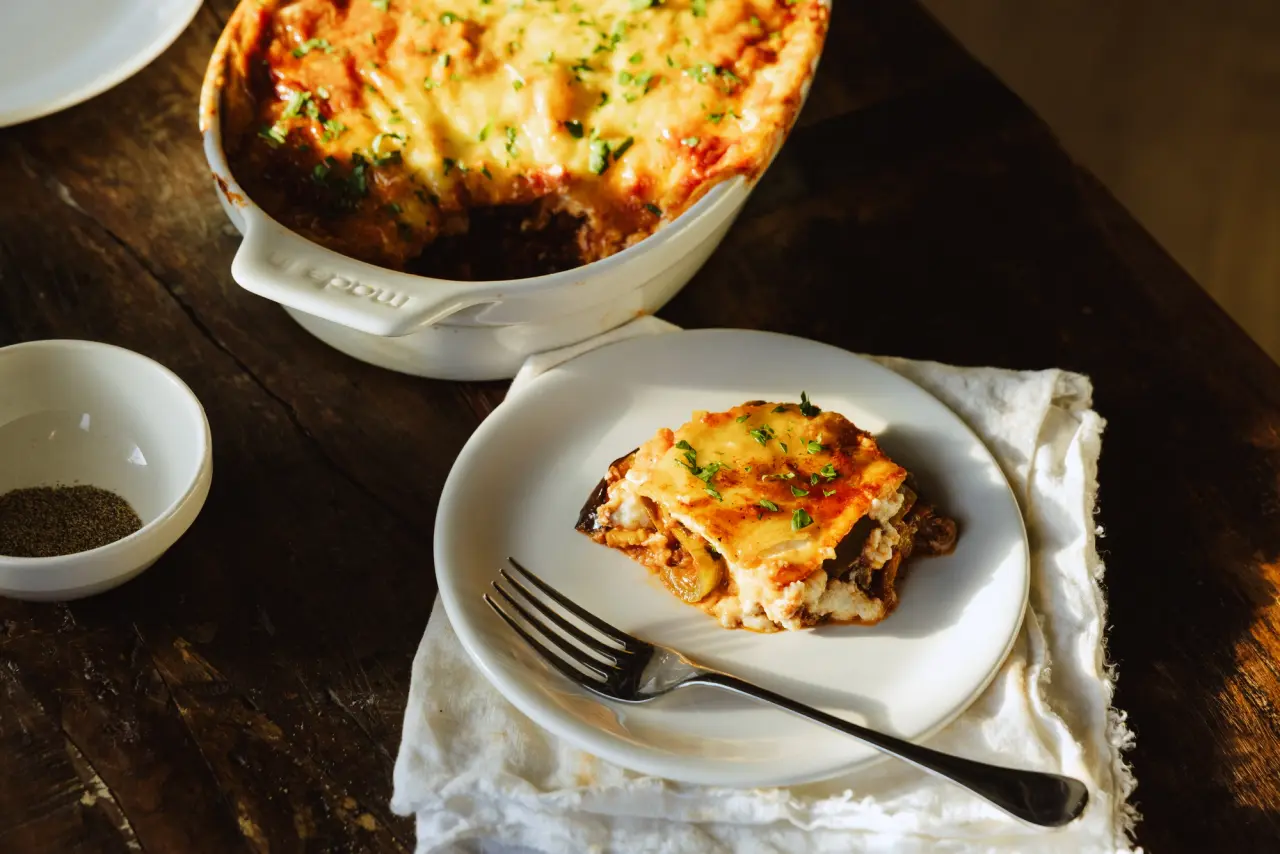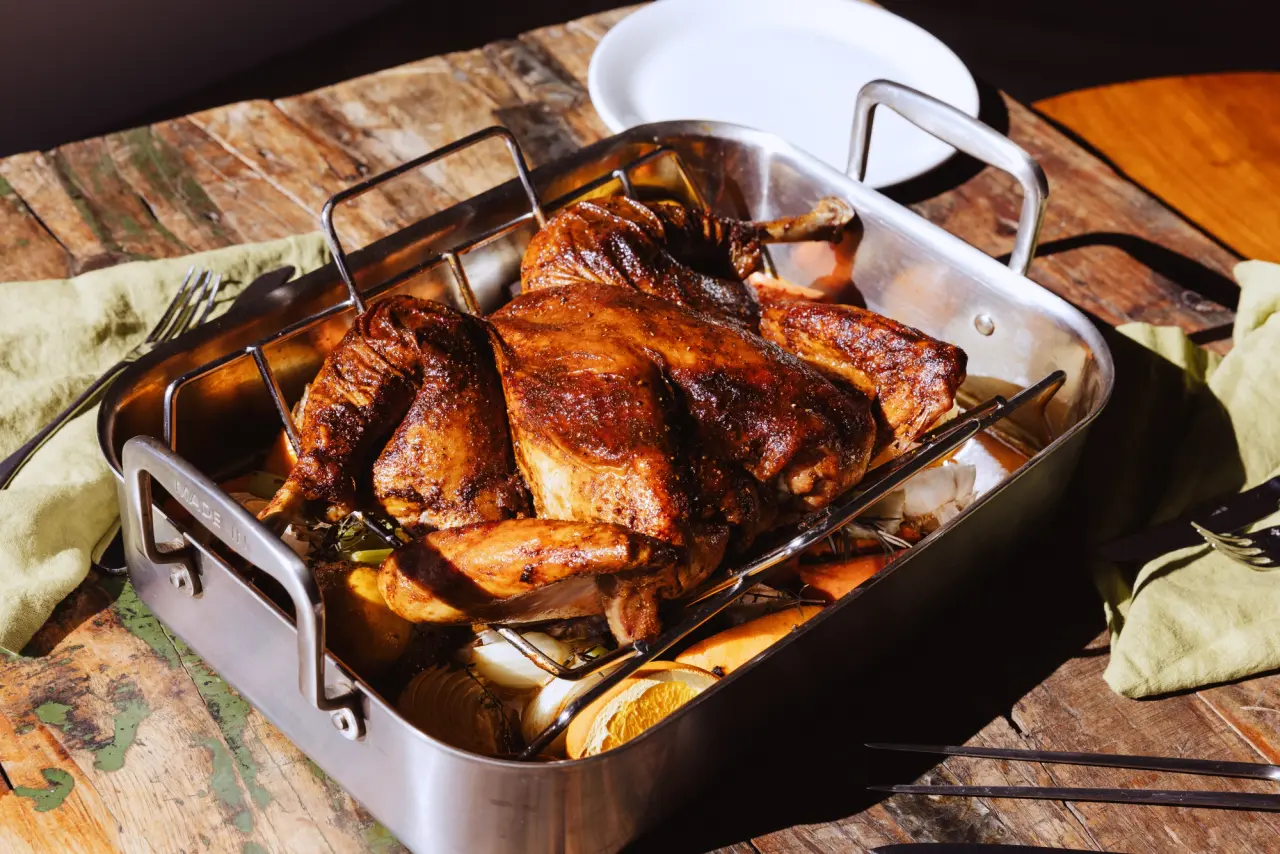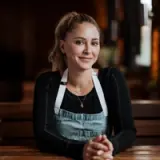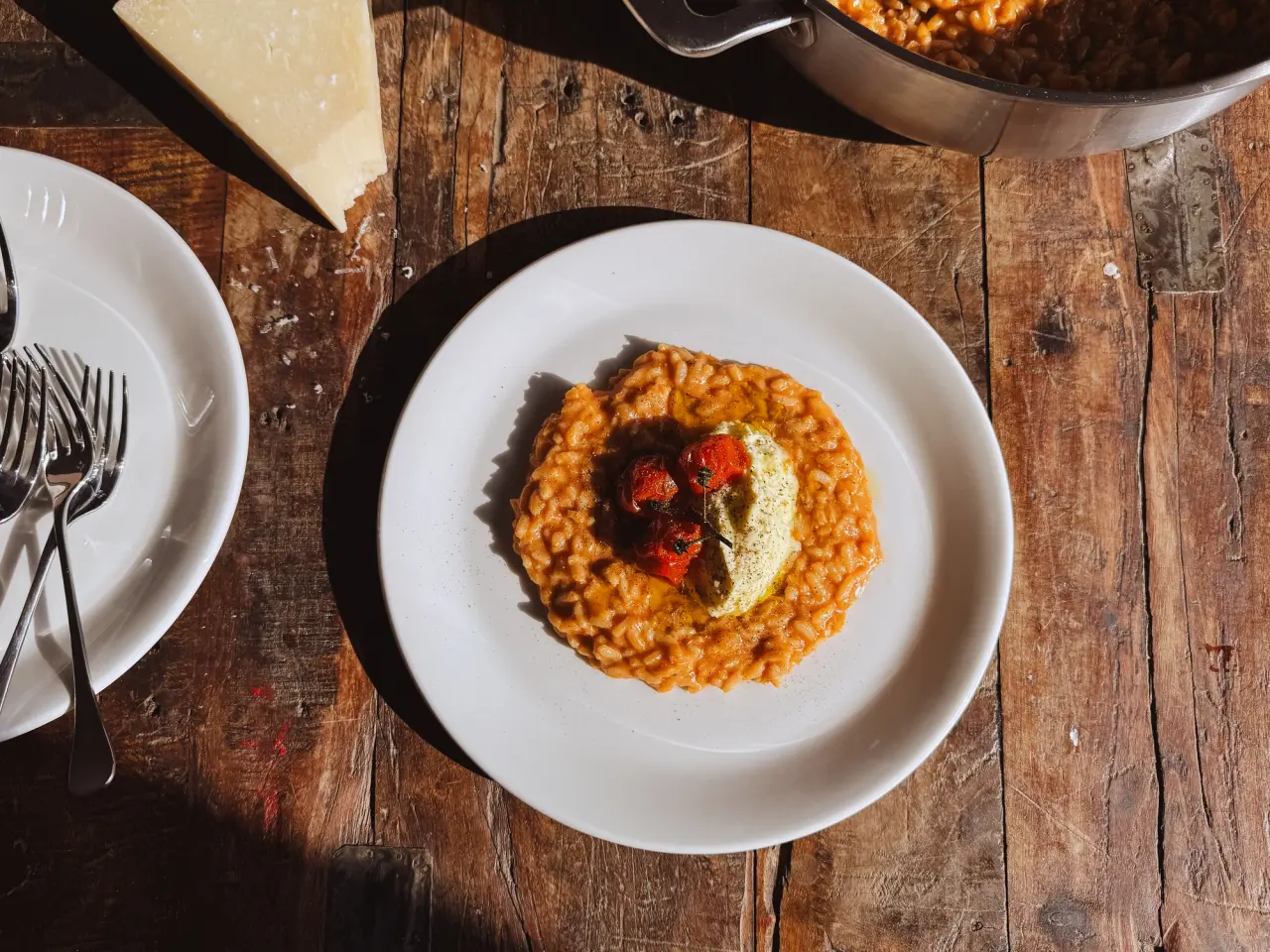
Slow Roasted Turkey with Herb Butter and Gravy
Get ready for the juiciest turkey brought to you by Chef Tom Colicchio.
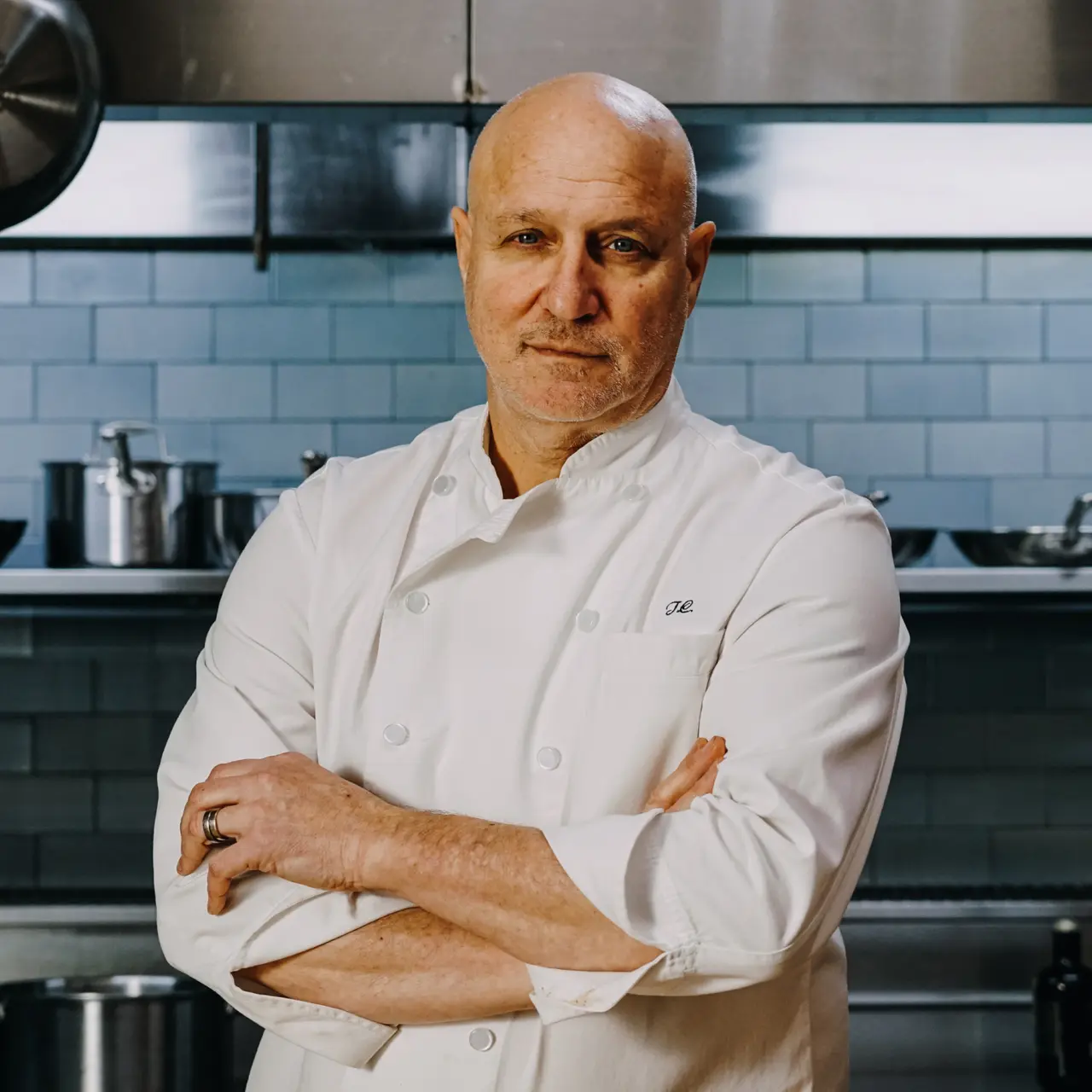
The centerpiece of many a Thanksgiving table, we wanted to make sure we did turkey right. This recipe, the centerpiece of our 1st Annual Thanksgiving Menu, takes a bit of planning before the big day, but with Chef Tom Colicchio’s expert guidance (and less than ten ingredients) you’ll be left with a holiday bird that’s moist and full of flavor. To start the herb butter process, you need to fully thaw your turkey. Ideally, you should let your buttered bird air dry for two days, but you can shorten it to just one day if necessary.
We have offered two different roasting temperatures depending on how much time you have. The first at 250F takes quite a long time, but Chef Colicchio firmly believes that it makes a much juicier final product and is therefore worth it. The second at 350F can also be used if you’d prefer a shorter cooking time. Also, don’t forget the turkey needs to sit out at room temperature for 1 hour before roasting.
Slow Roasted Turkey with Herb Butter and Gravy
Get ready for the juiciest turkey brought to you by Chef Tom Colicchio.
Tom Colicchio
- 1.
Two days before cooking, combine ½ cup (1 stick) room temperature butter with finely chopped herbs in a medium bowl. Remove defrosted turkey from packaging and place on a Sheet Pan. Pat turkey dry. Starting at the neck area, slide hand in between skin and breast meat, and work your hand back and forth to gently separate each side of the breast from the skin
- 2.
Rub about half of the herb butter under skin on to breast meat. Rub remaining herb butter all over outside of turkey. Season liberally with salt and pepper, all over the outside of the bird and on the inside the cavity. Transfer turkey to a Roasting Pan fitted with the Roasting Rack and let sit, uncovered, in the fridge for two days.
- 3.
After the turkey has air dried for two days, transfer to countertop. Stuff remaining rosemary, sage, and thyme sprigs along with 4 Tbsp. plain butter (cut into tablespoons) inside turkey cavity. Cross the legs, loosely tie together at the end of the drumsticks with butcher’s twine, and tuck wings tips under. Let turkey sit at room temperature for 1 hour before roasting.
- 4.
You have two temperature choices for this recipe. If you want to cook it low and slow like Chef Colicchio for an extra-juicy bird, follow the directions starting at 250F. If you’re a little more pressed for time, follow the directions for 350F, and your turkey will still be delicious.
- 5.
To roast at 250F:
- Place rack in lower third of oven making sure you have ample room for the turkey and preheat to 250F. Place Roasting Pan with turkey in oven and roast 45 minutes. Pull rack out, pour 1 cup Chicken Stock or broth over turkey, and place 1 Tbsp. butter in pan. Roast turkey an additional 30 minutes, then baste with pan juices (using either a turkey baster or a pastry brush), pour 1 more cup broth over, and add an additional 1 Tbsp. butter to pan.
- Continue cooking, basting and adding another 1 cup broth and 1 Tbsp. butter to pan every 30 minutes, up to 4 cups broth and 4 Tbsp. butter total, then continue to baste every 30 minutes with the pan drippings.
- Cook the turkey until a thermometer inserted into the thickest part of the thigh registers 135-140F, about 3 ½–4 hours after it goes in the oven—total cooking time will depend on its size. It’s very important to use a thermometer and watch carefully for this internal temperature. Increase oven temperature to 500F and cook turkey until skin is nicely browned and internal temperature reaches 165F, checking often (every 2–3 minutes), taking care not to burn the skin.
- If the skin is browning too quickly before the turkey is cooked through, loosely cover with foil and reduce oven temperature to 450F, if necessary. This step will take 30-60 minutes. Transfer turkey to a cutting board or Sheet Pan and let rest for 30 minutes. Carve and serve.
- 6.
To roast at 350F:
- Place rack in lower third of oven making sure you have ample room for the turkey and preheat to 350F. Place Roasting Pan with turkey in oven and roast 30 minutes. Pull rack out and pour 1 cup broth over turkey, place 1 Tbsp. butter in pan. Roast turkey an additional 30 minutes, then baste with pan juices (using either a turkey baster or a pastry brush), pour 1 more cup broth over, and add an additional 1 Tbsp. butter to pan.
- Continue cooking, basting and adding another 1 cup broth and 1 Tbsp. butter to pan every 30 minutes, up to 4 cups broth and 4 Tbsp. butter total, then continue to baste every 30 minutes with the pan drippings.
- Cook the turkey until a thermometer inserted into the thickest part of the thigh registers 135-140F, about 2-3 hours after it goes in the oven—total cooking time will depend on its size. It’s very important to use a thermometer and watch carefully for this internal temperature. Increase oven temperature to 500F and cook turkey until skin is nicely browned and internal temperature reaches 165F, checking often (every 2–3 minutes), taking care not to burn the skin.
- If turkey skin is browning too quickly before the turkey is cooked through, loosely cover with foil and reduce oven temperature to 450F, if necessary. This step will take 20-40 minutes. Transfer turkey to a cutting board or Sheet Pan and let rest for 30 minutes. Carve and serve.
- 7.
While the turkey rests, strain the pan juices into a medium bowl or a fat separator, removing as much fat as possible. You should have about 2 cups. Whisk in remaining 2 cups chicken broth. Melt remaining 3 Tbsp. plain butter in a 5QT Saucier over medium heat. Add ¼ cup all-purpose flour over the butter and cook, whisking constantly, until roux is golden brown, 5–7 minutes.
- 8.
Whisking constantly, gradually add broth mixture and bring to a boil. Reduce heat and simmer, whisking occasionally, until gravy is reduced to about 4 cups, 8–12 minutes. Taste and season with salt and/or pepper, if necessary.

From his time at the storied Gramercy Tavern to his ongoing role as head judge of Top Chef, Chef Tom Colicchio has been pioneering new American fine dining for most of his career. In recent years, he has relied more and more on our Carbon Steel Roasting Pan and the Fishing Knives we co-designed.
